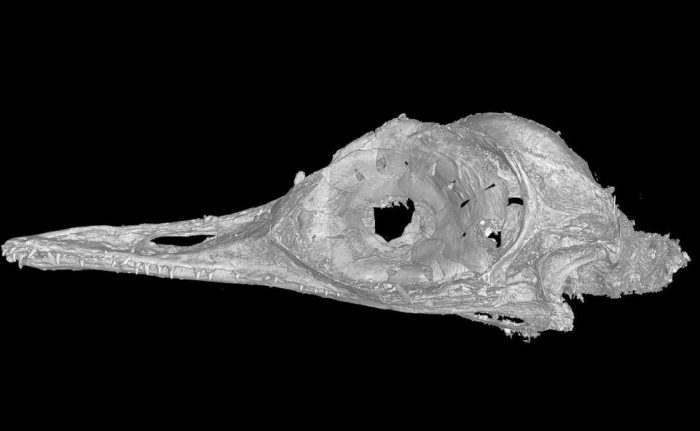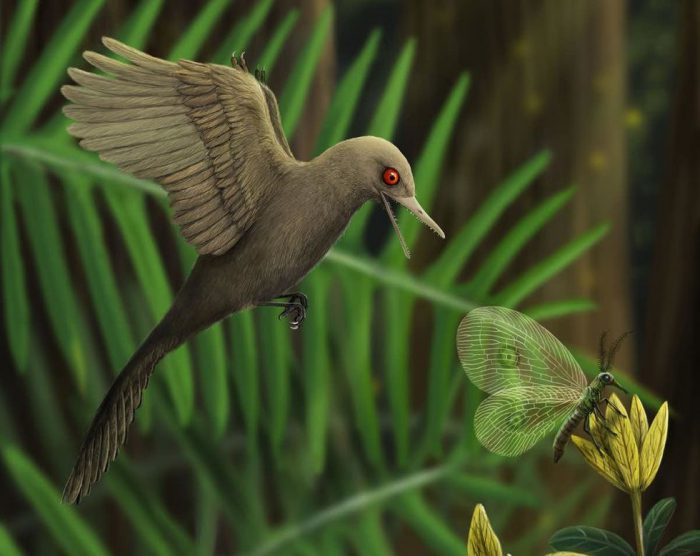There are many different ways for fossils to be made, each with their own characteristics and advantages. But in terms of the quality of preservation, nothing can come close to amber.
This hardened tree sap basically preserves living things in suspended animation, making 100-million-year-old creatures appear as though they only died a few days ago. The only issue? Sap never collects in anything but small pools, meaning that only the tiniest fragments of life get captured. Fortunately, when you're talking about the smallest dinosaur ever known, that's not a problem!
Little skull, big breakthrough

High-resolution x-rays were used to create this model of the dinosaur skull. (Xing Lida)
Meet Oculudentavis khaungraae (say AWK-yoo-loo-dehn-TAH-vihs kahn-GRAH-eh), a 99-million-year-old insect predator that looked more like a tiny bird than a dinosaur. Some time in the deep past, one of these animals died and was partially covered in amber. The eventual result was a 3-centimetre (1.25-inch) chunk of amber containing the smallest dinosaur skull ever found, measuring just 1.5 centimetres (0.6 inches).
The skull featured a long, thin beak — strikingly similar to that of a hummingbird, yet filled with dozens of needle-like teeth. These were likely used for catching insects. It also had extremely large eyes compared to the rest of the body and its bone structure was quite strong and well-developed. For this last reason in particular, paleontologists believe that this was a full-grown specimen, not a young one.
What do we know?
But the most curious feature of this dinosaur skull? What we don't know about it.
The link between birds and dinosaurs is getting more and more established all the time. Many dinosaurs had feathers and these prehistoric reptiles share far more similarities with birds than with modern reptiles.
But exactly how they evolved is still a huge mystery. Keep in mind that the Mesozoic Era (aka the Age of Dinosaurs) lasted about 180 million years. Yes, we have a lot of fossils from that time. But how many creatures existed that we have still never seen? How do they fit into the puzzle of how life evolved?
Seeing the Oculudentavis for the first time gives us another look into just how varied prehistoric life really was. At the same time that enormous beasts like Brachiosaurus were wandering around, these tiny animals were... hopping? Leaping? Gliding? Flying? So many questions!
In fact, without a full Oculudentavis fossil, we don't even know exactly how tiny it really was! It's kind of frustrating, but it's also really thrilling, too! Watch this paleontologist describe why this new fossil is such a groundbreaker below.
 Oculudentavis khaungraae was one tiny — and super interesting — little bird. No wait, dinosaur! (Han Zhixin)
Oculudentavis khaungraae was one tiny — and super interesting — little bird. No wait, dinosaur! (Han Zhixin)










I really like dinosaurs!
SOOOOO TINY 😯 😯 😯 😯